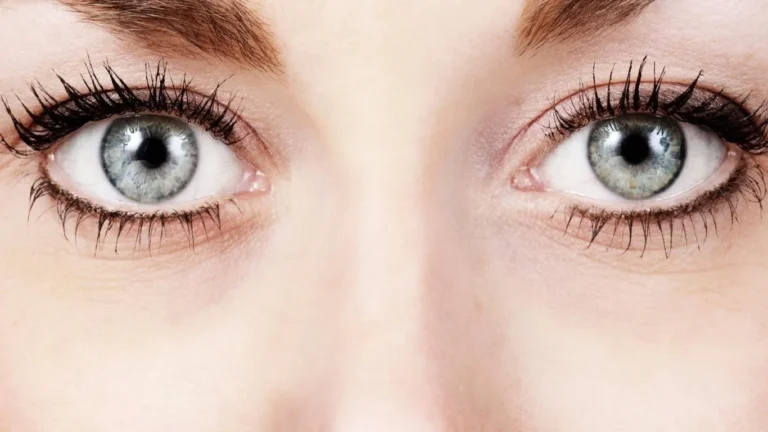Rheumatoid Arthritis Relief: Powerful Self-Massage Techniques for Pain Management
Rheumatoid arthritis (RA) is one of those conditions that can really take a toll on both your body and your day-to-day life. As someone who’s been in the healthcare field for years, especially as a Rheumatology Nurse Practitioner, I’ve seen firsthand how challenging it can be for patients to manage the pain, stiffness, and overall impact on their joints. One thing I’ve found incredibly helpful in managing the discomfort is self-massage. Now, I know what you’re thinking—massage for RA? It seems almost counterintuitive, right? But trust me, self-massage techniques for rheumatoid arthritis relief can actually be a game-changer in managing flare-ups and promoting long-term joint health. Let’s dive into how this works.
Understanding Rheumatoid Arthritis and Its Impact on Your Body
Rheumatoid arthritis is an autoimmune disease that primarily affects your joints, causing inflammation, pain, and sometimes deformity. Unlike osteoarthritis, which is more about wear and tear on the joints, RA is your immune system mistakenly attacking the synovial membrane—the lining of your joints. This leads to swelling, stiffness, and the dreaded flare-ups that seem to come out of nowhere.
For those of us who live with RA or work with patients who have it, we know that it’s not just about physical pain. There’s also the emotional toll that comes with feeling like you’re constantly battling your body. That’s why I’m a big believer in holistic approaches like self-massage. It’s something that’s been part of my routine for years, and I’ve seen it do wonders for my patients, too. Self-massage can reduce tension, ease pain, and improve mobility, all of which are crucial when dealing with RA.
How Self-Massage Can Help with Rheumatoid Arthritis Relief
You might be wondering, “How does massage even help with a condition like RA?” The answer lies in the way our body reacts to touch. Massage, particularly self-massage, can stimulate blood circulation, help break up muscle tightness, and promote relaxation. These are all incredibly important factors when you’re dealing with the inflammation and stiffness that come with RA.
The Power of Relaxing Your Muscles
RA doesn’t just affect your joints. It can also lead to tight, tense muscles that become overworked due to compensation. Think about it: when your joints are swollen and painful, your muscles have to work extra hard to help you move around. This can create a vicious cycle of pain that just doesn’t let up. Self-massage can help target these muscle groups and loosen up that tension.
For instance, I’ve found that gently massaging the forearm muscles can help ease the strain on the wrist joints, and working on the neck and shoulder area can alleviate some of the discomfort that often radiates down the arms. When you take the time to focus on these areas, it not only helps release muscle tension, but it can also improve your range of motion and overall joint function.
Reducing Inflammation and Promoting Healing
Another huge benefit of self-massage for RA sufferers is the potential to reduce inflammation. While you’re not going to completely “cure” your RA by massaging your joints, regular self-massage can help keep inflammation in check. By gently massaging the affected areas, you can increase blood flow to the joints, which aids in the delivery of nutrients and removal of waste products. This can promote healing and reduce the sensation of swelling over time.
Simple Self-Massage Techniques for Rheumatoid Arthritis Relief
Now that you know how self-massage can help with RA, let’s get into some practical techniques you can use at home. These are simple moves that don’t require a professional massage therapist (although they can definitely help if you’re able to see one!). But these are perfect to incorporate into your daily routine.
1. Hand and Wrist Massage
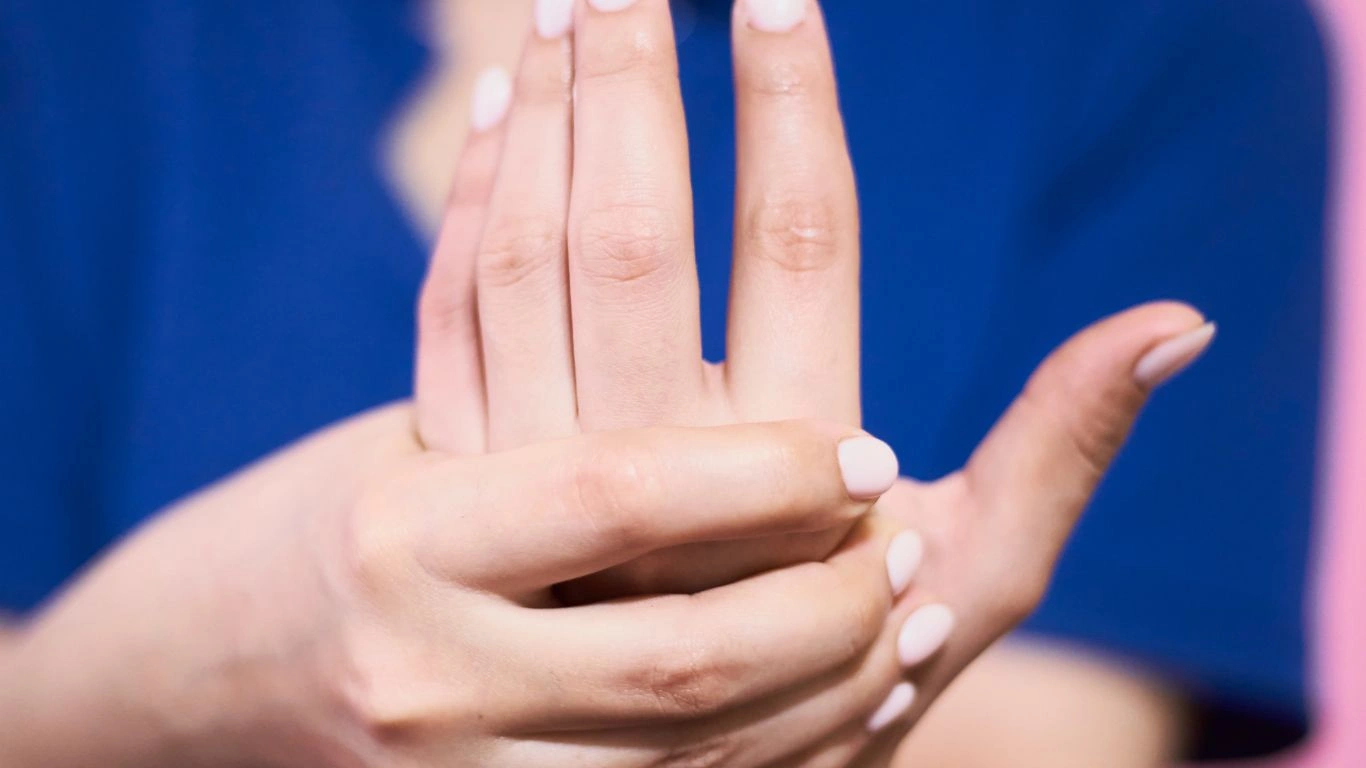
The hands and wrists are often the first places affected by rheumatoid arthritis, and they can become incredibly stiff and painful. Here’s a technique that’s easy to do and can provide immediate relief:
- Start by gently holding your wrist with your opposite hand.
- Using your thumb, gently massage the base of your palm and move down towards the wrist.
- Make small circular motions with light pressure, avoiding any painful areas.
- Next, move to the fingers. Use your thumb and index finger to gently press and knead each finger, working from the base towards the tip.
- Repeat this for a few minutes, focusing on areas that feel especially tight or swollen.
This technique helps increase circulation to your hands and wrists and promotes relaxation, reducing stiffness and discomfort.
2. Neck and Shoulder Massage
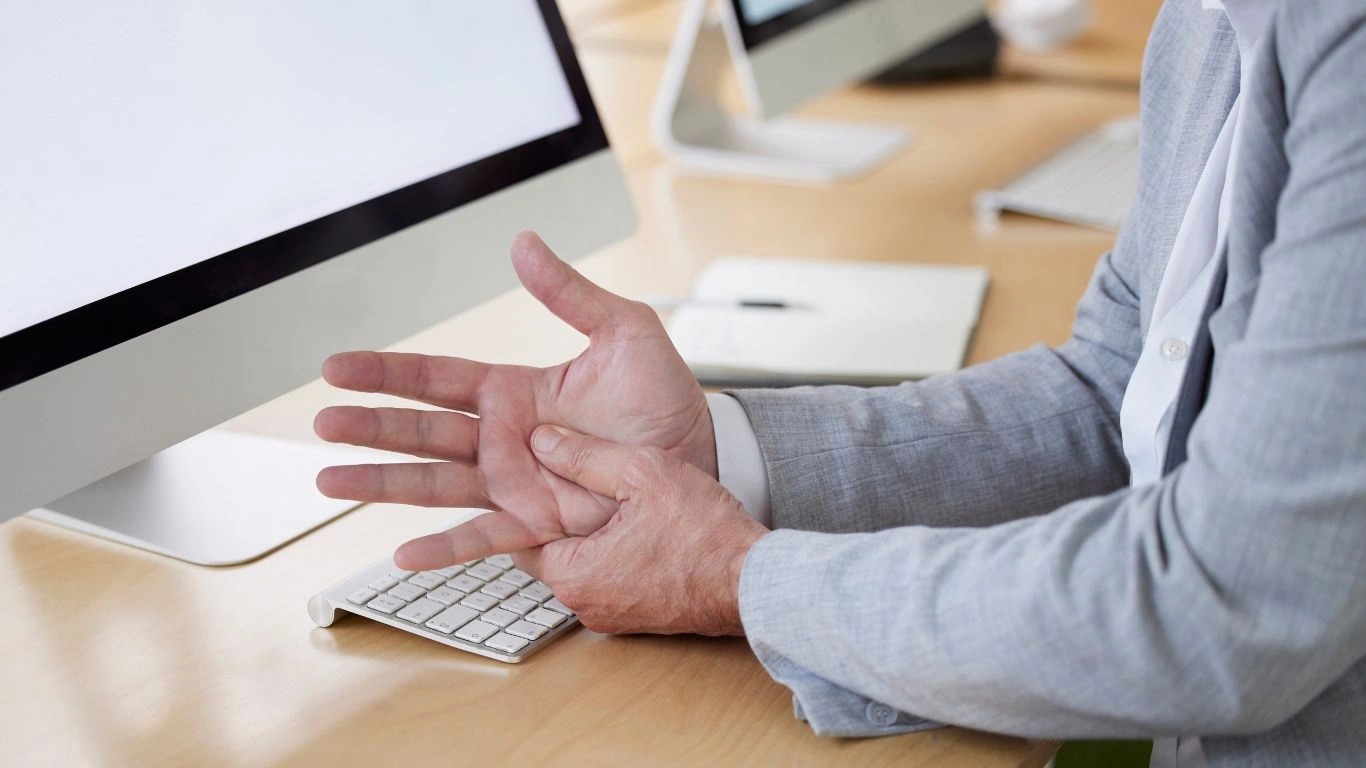
Many people with RA also experience discomfort in the neck and shoulder region. This can be caused by muscle tension due to restricted movement in the arms or a general imbalance in posture. Here’s a technique to help relax these areas:
- Place your fingers at the base of your neck, just where the shoulders meet the neck.
- Gently apply pressure and move in circular motions. If you find any particularly tense spots, focus on them for a few seconds longer.
- Next, use your opposite hand to gently massage your shoulder area, working out any knots that have formed.
- Don’t forget to take breaks—massage shouldn’t feel painful, so if it does, ease off on the pressure.
3. Knee Massage for Joint Relief
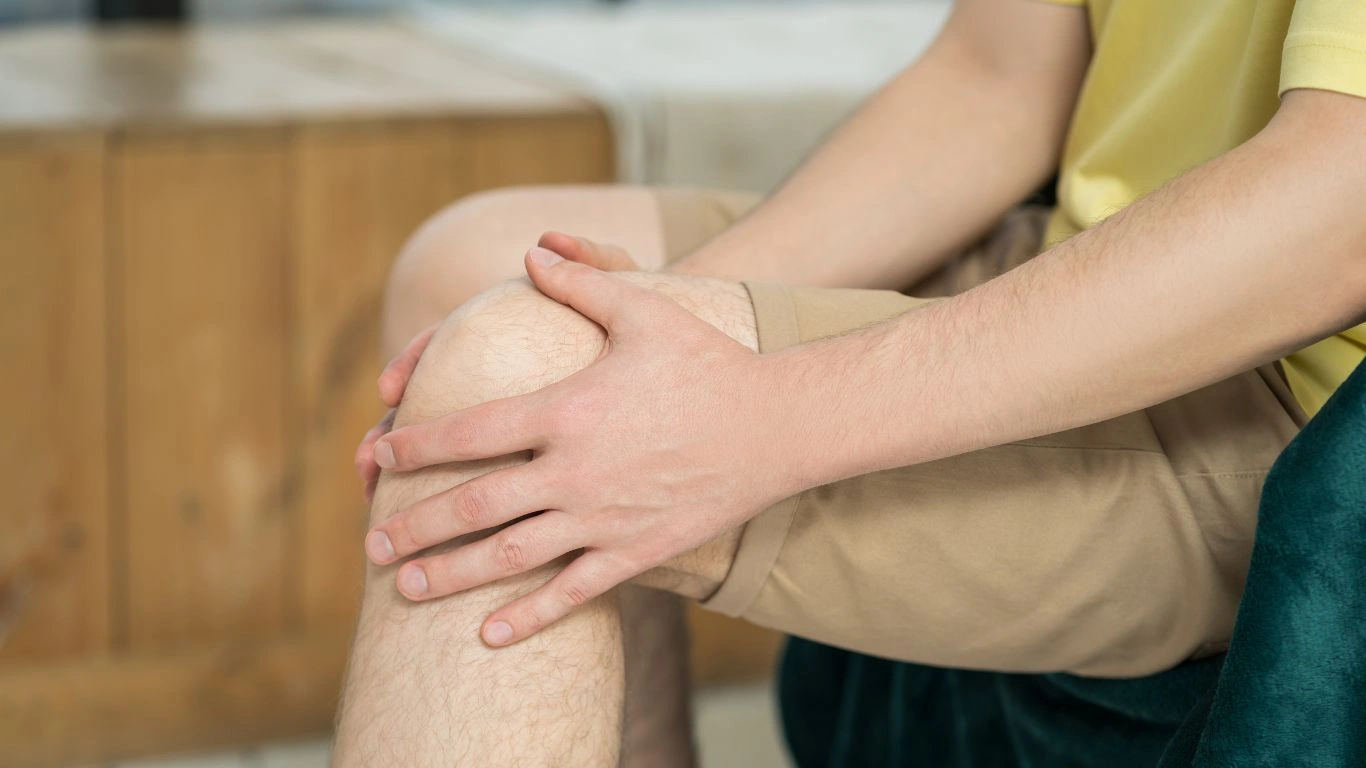
The knees can become particularly inflamed and stiff with RA. A gentle self-massage around the knee joint can reduce swelling and improve mobility:
- Use your fingertips to apply light pressure around the kneecap in circular motions.
- Move slowly and carefully to avoid causing discomfort.
- Massage both sides of the knee joint, focusing on any areas that feel particularly tight or tender.
- Don’t forget to also massage the thigh muscles, as tightness here can also affect the knee joint.
These simple techniques may help alleviate some of the discomfort you’re feeling and can be done several times a day, especially if you’re experiencing a flare-up.
Incorporating Self-Massage into Your Daily RA Routine
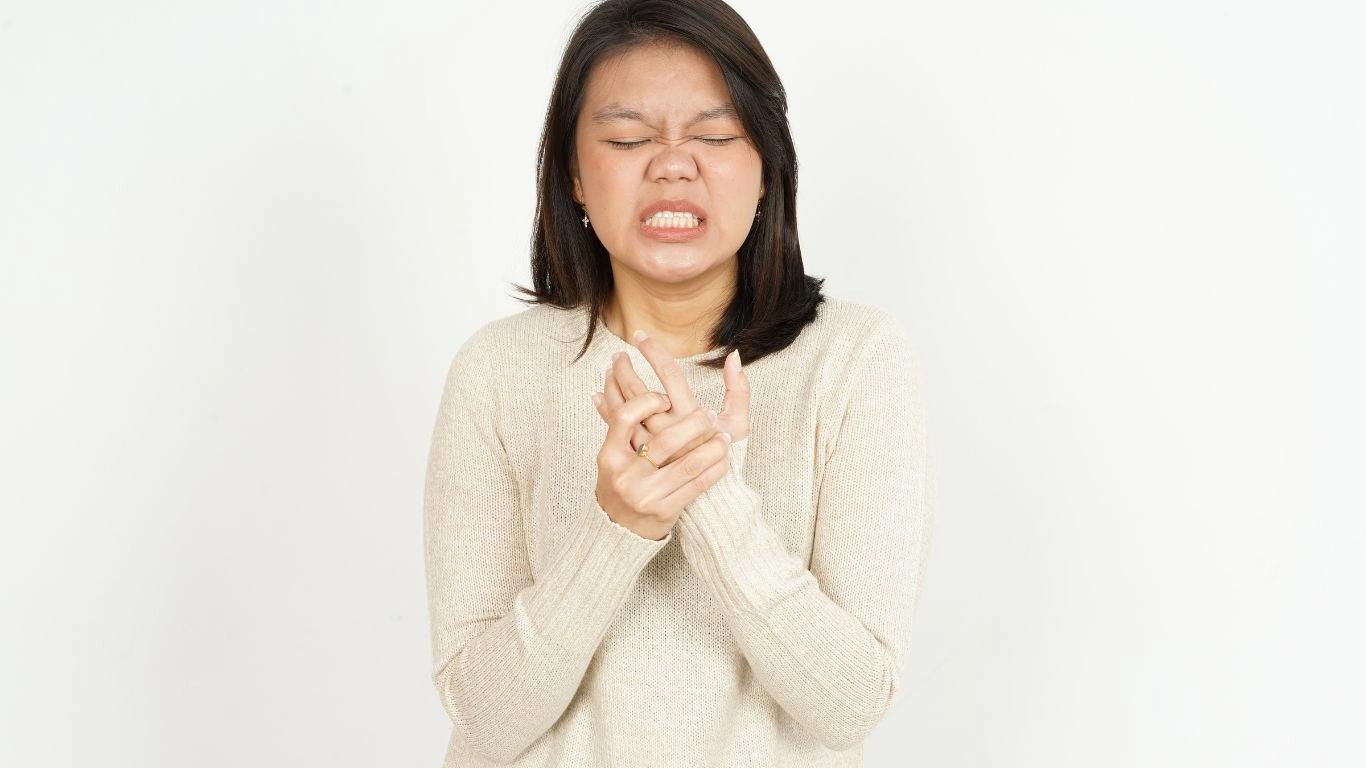
One thing I always tell my patients—and I practice myself—is that consistency is key. Self-massage isn’t something you just do once during a flare-up and forget about. To really get the benefits, especially when you’re dealing with something as persistent as rheumatoid arthritis, it needs to become part of your regular wellness routine. I’ve had mornings where I barely wanted to roll out of bed because my joints felt like rusty hinges, but after just five minutes of light massage, I felt more mobile and less stiff.
It doesn’t have to be a major production. Even taking just a few minutes in the morning to gently work through your hands, wrists, or shoulders can help you start the day with a bit more ease. The key is listening to your body. Some days you’ll need more time and attention on certain areas, while others, a quick tune-up will do.
Tips for Making It Stick
- Pair it with another habit: I often massage my hands while I’m drinking my morning coffee or while watching a show at night.
- Set gentle reminders: A quick reminder on your phone or sticky note can keep you consistent until it becomes a habit.
- Keep tools handy: I keep a massage ball and a small jar of warming balm in my nightstand drawer. Makes it easy to start anytime.
Helpful Tools and Products to Enhance Self-Massage for RA
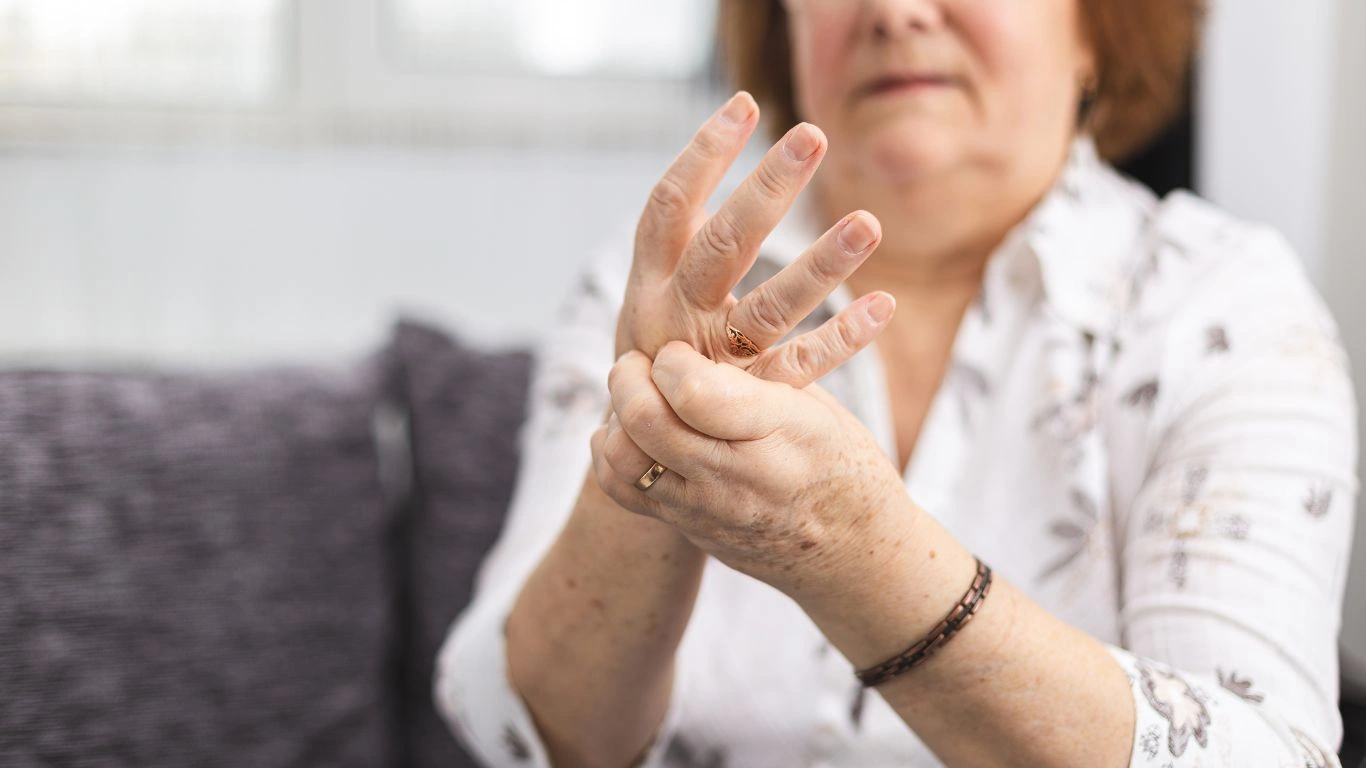
When your hands are inflamed or you’re just too fatigued to use pressure, massage tools can be your best friend. Over the years, I’ve tried quite a few and here are some of my go-tos:
1. Massage Balls and Rollers
These are perfect for areas like the feet, back, and even your forearms. I use a soft-textured massage ball when my hands are too sensitive to press into the muscles directly. Just place it against a wall or floor and gently roll the targeted area. Bonus: you control the pressure so it never has to be painful.
2. Warm Compresses and Heating Pads
Heat therapy is incredibly effective at relaxing stiff joints and muscles before massage. I’ll often use a warm compress on my wrists or knees for about 10-15 minutes and follow up with a gentle massage. The difference is night and day—it really helps your tissues become more pliable and less resistant to movement.
3. Topical Balms and Oils
There are tons of options out there, but I lean toward natural balms with ingredients like arnica, menthol, or eucalyptus. These provide a soothing, warming sensation that enhances the massage experience. Just be sure to patch-test first if you have sensitive skin.
When to Use Caution with Self-Massage for Rheumatoid Arthritis
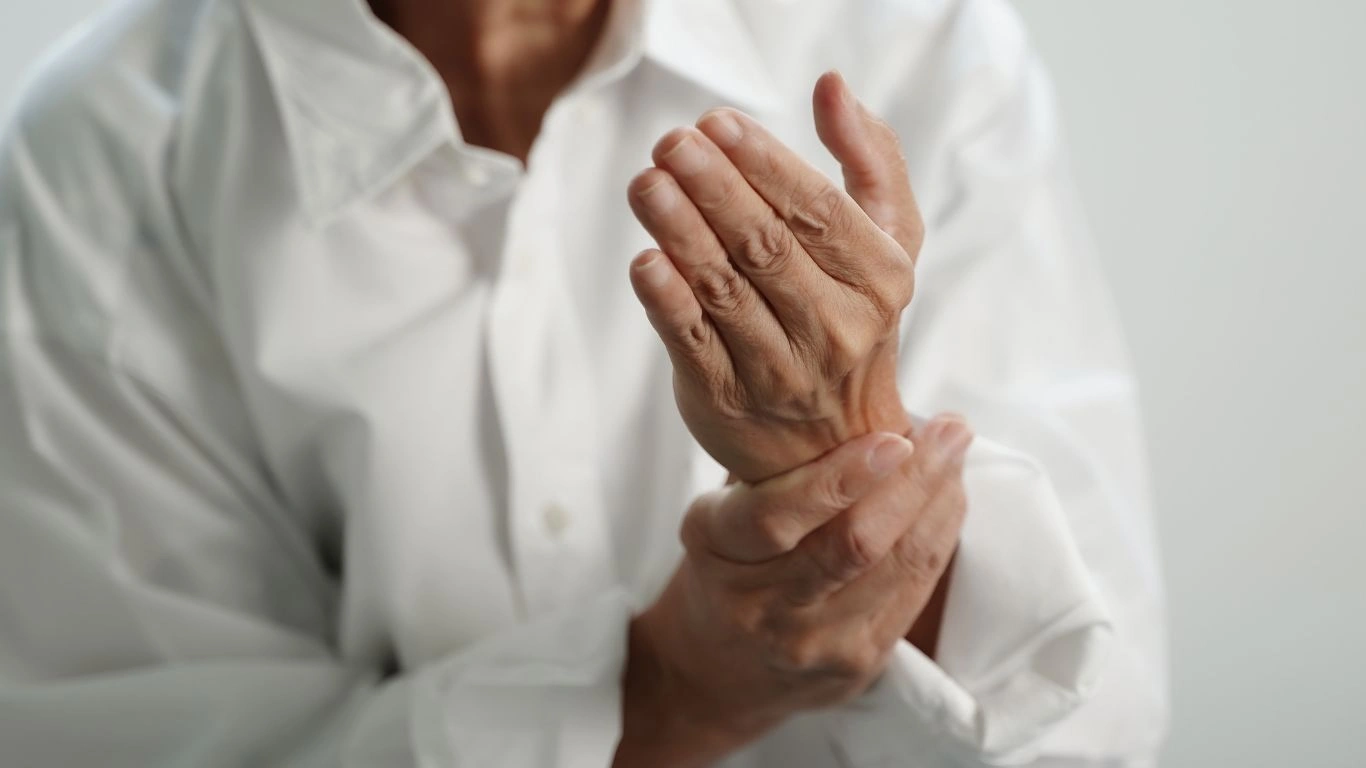
Let me be real for a second—self-massage is fantastic, but it’s not always appropriate. One thing I’ve learned from years in rheumatology is that every RA patient is different, and so is every flare-up. There are days when your joints are too inflamed, too sensitive, or too swollen to tolerate even the gentlest touch. That’s okay. On those days, rest and elevation might be more appropriate than any kind of manipulation.
Signs You Should Skip or Modify Massage
- Extreme swelling or redness: This could indicate a severe flare or even an infection—talk to your provider before proceeding.
- Sharp or shooting pain: Self-massage should never cause sharp pain. If it does, back off immediately.
- Recent joint injections or surgeries: Always wait until cleared by your provider before doing any massage in those areas.
When in doubt, consult your rheumatologist or physical therapist. In fact, I’ve collaborated with PTs in my clinic to create customized massage plans for patients, especially those with complex joint involvement. It’s all about teamwork and finding what works best for your individual body.
Building a Supportive Environment Around Your RA Care

Here’s something that doesn’t get talked about enough: emotional support. Living with RA can be isolating, and feeling like you’re the only one dealing with the stiffness, the pain, and the fatigue can weigh heavily on you. That’s why it’s important to build a network of support around your RA care—friends, family, healthcare providers, and yes, even online communities.
I encourage my patients to talk openly about what they’re going through. You’d be surprised how many people are willing to lend a hand (literally, sometimes—I’ve taught partners how to do gentle massage for loved ones). Having a trusted person help you with massage, especially in hard-to-reach areas like the back, can make a big difference, both physically and emotionally.
Simple Ways to Build Your Support System
- Talk to your family or caregiver about your self-care routine—they might want to be part of it.
- Join an RA-focused support group or community, either locally or online.
- Connect with your care team regularly to adjust your routine as needed.
Remember, you’re not alone in this. RA can feel overwhelming at times, but with a well-rounded approach that includes self-massage, proper medication, supportive movement, and emotional connection, it’s entirely possible to feel more in control of your body again. Self-massage is just one of the tools in your toolkit—but it’s a powerful one.
Long-Term Benefits of Self-Massage for Rheumatoid Arthritis

As we’ve discussed, self-massage can provide significant relief in the moment, but what about the long-term benefits? This is where things really get exciting. Over time, regularly practicing self-massage can have lasting positive effects on both your body and your mental well-being.
One of the most rewarding long-term effects of self-massage is increased mobility. When you consistently apply these techniques to your joints and muscles, you’re helping to prevent long-term stiffness. Think of it as preventive maintenance: by keeping your muscles and joints moving, you reduce the risk of contractures (permanent tightening of muscles and tendons) that are often associated with chronic RA.
From my own experience, I’ve seen patients who were once limited by their ability to move start to regain a sense of freedom. They’re able to pick up their kids, walk without a limp, and even rejoin activities they once enjoyed. And no, it’s not magic—just a solid commitment to self-care that includes massage as a tool in their arsenal.
Improved Circulation and Joint Health
Another major benefit is improved circulation. RA can cause poor blood flow to the affected areas, making it harder for your body to heal. Regular self-massage stimulates blood flow, which brings fresh oxygen and nutrients to the inflamed tissues. This doesn’t just relieve immediate pain—it also encourages long-term joint health. Proper circulation can slow down joint degeneration and help your body repair itself more effectively.
By improving blood flow through massage, you can also speed up the removal of waste products like metabolic byproducts and lactic acid that accumulate in tissues during inflammation. In the long run, this can prevent further flare-ups and promote healthier joints.
How to Combine Self-Massage with Other RA Treatments
While self-massage is a powerful tool in managing RA, it’s even more effective when combined with other treatments. As a Rheumatology Nurse Practitioner, I always emphasize the importance of a multifaceted approach to RA care. No single treatment will work alone, and that’s especially true for self-massage. Let’s look at some other strategies you can incorporate alongside self-massage to maximize your relief.
1. Medication and Disease-Modifying Therapies (DMARDs)
For many people with RA, medications are a critical component of treatment. Disease-modifying antirheumatic drugs (DMARDs) are often prescribed to help slow the progression of the disease and reduce inflammation. These can help you manage the underlying disease while self-massage targets muscle tension and joint stiffness.
If you’re taking medications like methotrexate or biologics, remember that massage can complement these treatments, not replace them. Make sure you’re following your doctor’s instructions when it comes to managing your medication regimen. Self-massage should never interfere with your prescribed treatments—it should just be an additional layer of support to help manage symptoms.
2. Physical Therapy and Exercise
Physical therapy (PT) is another great addition to your RA treatment plan. A physical therapist can teach you exercises specifically tailored to your joint health. When combined with self-massage, PT can help restore mobility, strength, and function.
Some of the best exercises for RA include low-impact activities like swimming or walking. These help keep your joints moving without putting too much stress on them. In addition to exercise, my patients often report that regular stretching also enhances the effectiveness of their self-massage sessions by further reducing muscle tightness.
3. Nutrition and Anti-Inflammatory Diet
What you eat plays a huge role in managing inflammation. Incorporating foods rich in omega-3 fatty acids, antioxidants, and anti-inflammatory compounds can complement your self-massage routine. Omega-3s, which are found in fatty fish like salmon, flaxseeds, and walnuts, have been shown to help reduce inflammation in the body.
Eating a balanced diet and avoiding processed foods that can trigger inflammation is important for managing RA. Think of your diet as fuel for your body—adding anti-inflammatory foods is like putting the best quality fuel into your car for optimal performance.
References for Further Reading on Rheumatoid Arthritis and Self-Care
If you’re looking for more information on managing rheumatoid arthritis through various self-care methods, here are some trusted resources I highly recommend:
- National Institutes of Health (NIH) – For research-based articles and resources on RA and treatments.
- Health.com – Offers insights on holistic approaches and managing chronic conditions like RA.
- American College of Rheumatology – A great resource for up-to-date clinical information on RA.
Disclaimer
While self-massage can provide significant relief for many people with rheumatoid arthritis, it’s important to understand that every individual’s condition is unique. The techniques shared in this article are not a substitute for professional medical care. Always consult with your rheumatologist, physical therapist, or healthcare provider before trying new treatments or making changes to your current care plan. This article is intended for informational purposes only and is based on my personal experience as a Rheumatology Nurse Practitioner. Please seek professional advice tailored to your individual needs.

Tarra Nugroho is a dedicated Nurse Practitioner with a strong foundation in family and preventive care. She brings both compassion and clinical expertise to her practice, focusing on patient-centered care and health education. As a contributor to Healthusias.com, Tarra translates medical knowledge into clear, empowering articles on topics like women’s health, chronic disease management, and lifestyle medicine. Her mission is simple: help people feel seen, heard, and informed—both in the clinic and through the content she creates. When she’s not caring for patients, Tarra enjoys weekend hikes, plant-based cooking, and curling up with a good health podcast.




